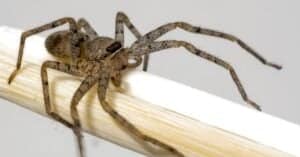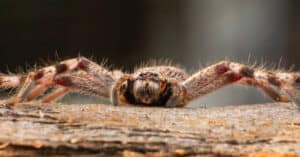Wolf spiders are ground hunters that belong to the family Lycosidae. In total, they comprise nearly 124 genera and over 2800 known species. You can find wolf spiders on every continent except Antarctica and in a variety of different habitats. Many people mistake them for the similar-looking nursery web spiders and grass spiders, although they are generally distinguishable by their large legs and eyes and swift movements. Here are 10 incredible wolf spider facts that examine what makes these spiders so fascinating.

10. Most Wolf Spiders Don’t Spin Webs
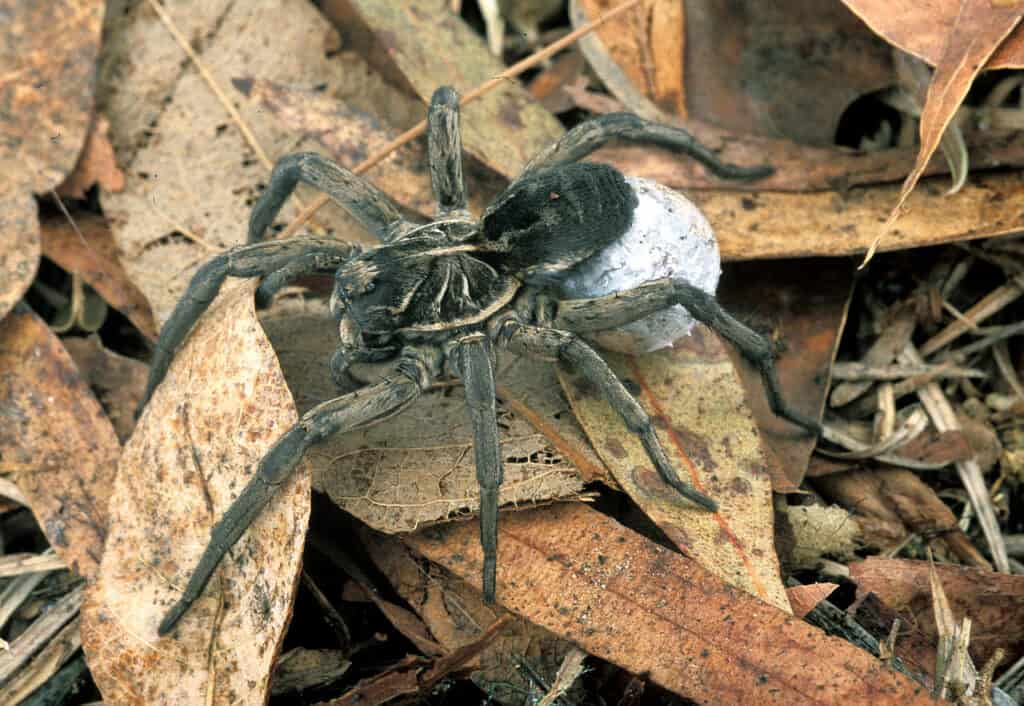
Wolf spiders don’t spin webs.
©CSIRO / CC BY 3.0 – License
Our first entry on our list of wolf spider facts is perhaps also one of the most surprising. It’s a commonly held belief that most spiders build webs that they use to capture prey. In reality, the majority of spiders don’t spin webs to catch food. Instead, these spiders use their silk for other reasons. Some cover burrows with silk to hide from prey and predators, while others spin silk sacs to hold their eggs.
Wolf spiders are one of the many arachnids that don’t spin webs. Since they don’t create webs, they create burrows in the ground that they use as shelters to hide from predators and prey. That said, most still possess the ability to create silk. Females use this silk to attach their egg sacs to their spinnerets.
9. Wolf Spiders Use A Variety of Hunting Tactics
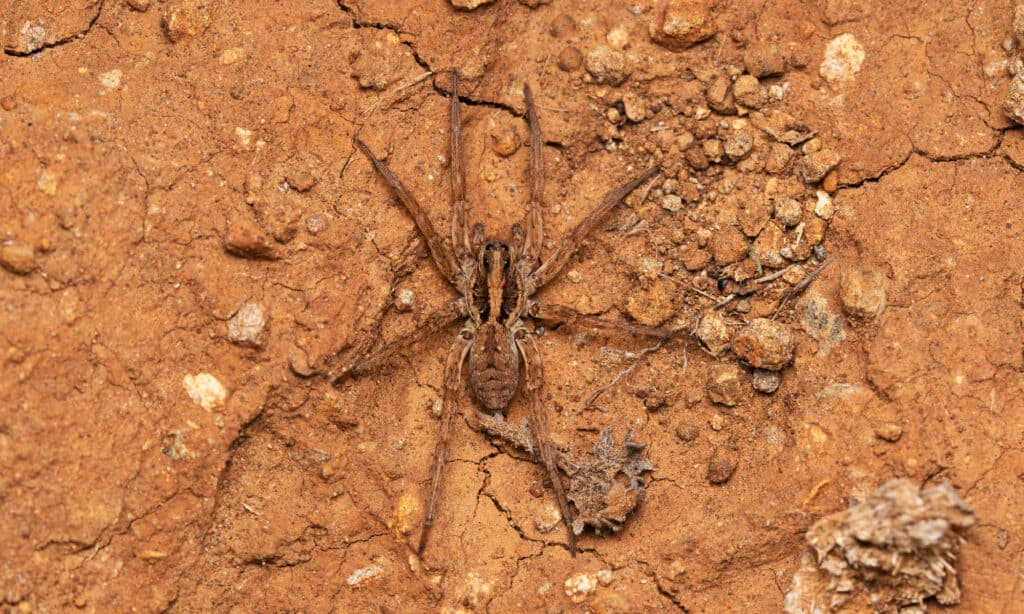
Wolf spiders chase down or ambush their prey.
©iStock.com/ePhotocorp
Over the years, wolf spiders evolved a variety of hunting tactics. Some wolf spiders rely on their speed and power to help them overpower their prey. These spiders wander around in search of prey and then utilize their long, powerful legs to chase down their food.
On the other hand, some wolf spiders prefer to rely on stealth and ambush tactics to secure their next meal. Certain wolf spiders choose to wait at the front entrance of their burrows for prey to wander past. Once the prey is close enough, these spiders dart outside and snatch their unwary prey. Still, others prefer to rely on their built-in camouflage to help them blend into their environment so that they can get close enough to land a killing blow.
8. Wolf Spiders Have Excellent Eyesight
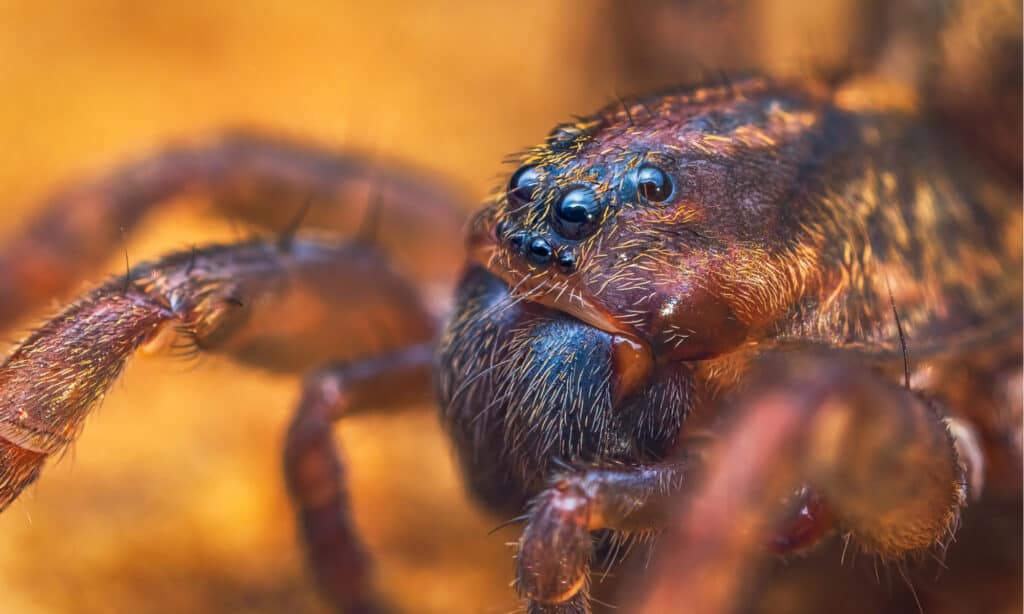
Wolf spiders have excellent vision.
©Lukas Jonaitis/Shutterstock.com
Like most spiders, wolf spiders possess 8 eyes. Their eyes are arranged in three rows, with four small eyes on the bottom, two large eyes in the middle, and 2 medium-sized eyes on top. However, unlike many spiders, which actually have poor eyesight, wolf spiders have excellent vision.
Since wolf spiders don’t spin webs, they rely on their keen eyesight to help them catch prey. The wolf spider’s four larger eyes possess a retroreflective tissue known as tapetum lucidum. This tissue reflects light and can be witnessed if you shine a light over a wolf spider’s eyes. Overall, wolf spiders possess the third-best eyesight of any spider group. Only the jumping spiders of the family Salticidae and the huntsman spiders in the family Sparassidae surpass them in terms of visual acuity.
7. Female Wolf Spiders Carry Their Eggs on Their Spinnerets
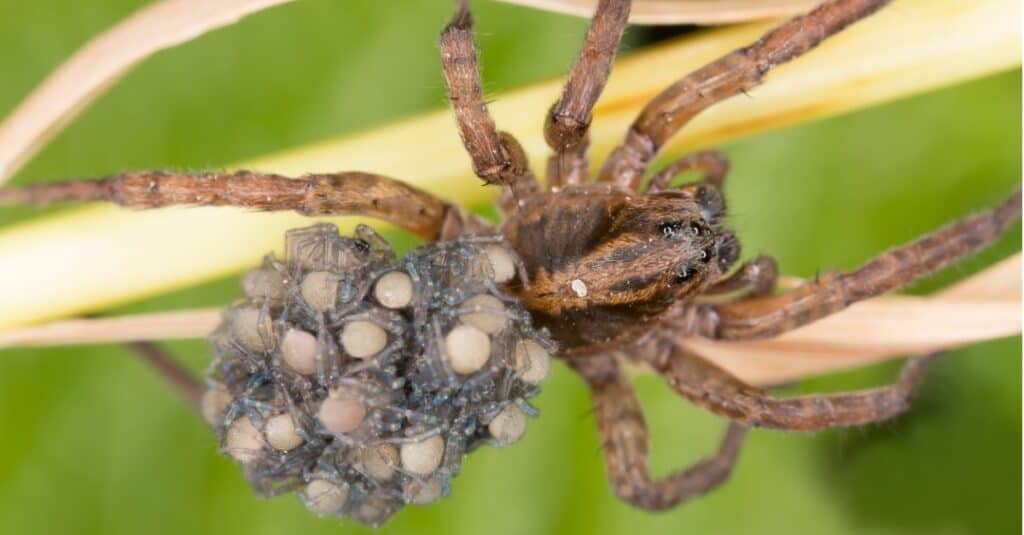
Female wolf spiders carry their young on their spinnerets.
©iStock.com/Henrik_L
Next up, we have one of our creepier wolf spider facts. Animals have evolved specialized methods to help them protect their offspring. Some animals construct nests to protect their eggs, while others bury their eggs in the ground or in the carcasses of their prey. As for spiders, many construct silk sacs to hold their eggs, which they usually attach to a web, leaf, or other structure.
Meanwhile, wolf spiders invented a unique method of protecting their eggs that allows them to keep a close eye on their progeny. After laying their eggs, female wolf spiders spin a silk sac to hold the eggs and attach the sac to their spinnerets. They then carry the eggs on their back until the offspring hatch. Even after hatching, the young wolf spiders will ride on their mother’s back for a time.
6. Wolf Spiders Utilize Camouflage to Help Them Find Prey
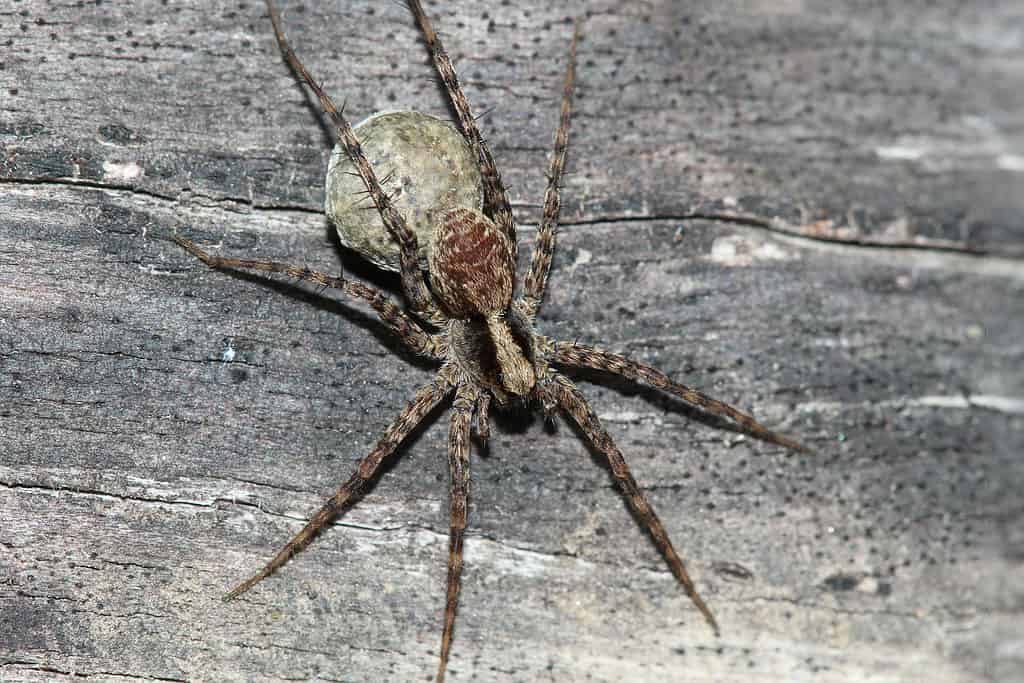
Several wolf spider species have natural camouflage to help them blend into their environment.
©Maksim Miasnikou/Shutterstock.com
Camouflage is a common trait in the animal kingdom. A number of animals use camouflage to help them avoid predators and catch prey. For example, many octopuses can make themselves look like rocks or blend in with aquatic substrates. Similarly, chameleons can change their color almost at will to blend in with their surroundings.
Wolf spiders also possess camouflage that they use to great effect to help them find prey and avoid predators. However, their camouflage is not as advanced as that used by some other species. No wolf spiders have the ability to change their color to match their environment. Instead, several species have natural camouflage that matches their preferred habitat. These spiders have colors that allow them to blend into rocks, tree bark, or mossy ground, thereby avoiding detection.
5. Wolf Spiders Get Their Name From Wolves
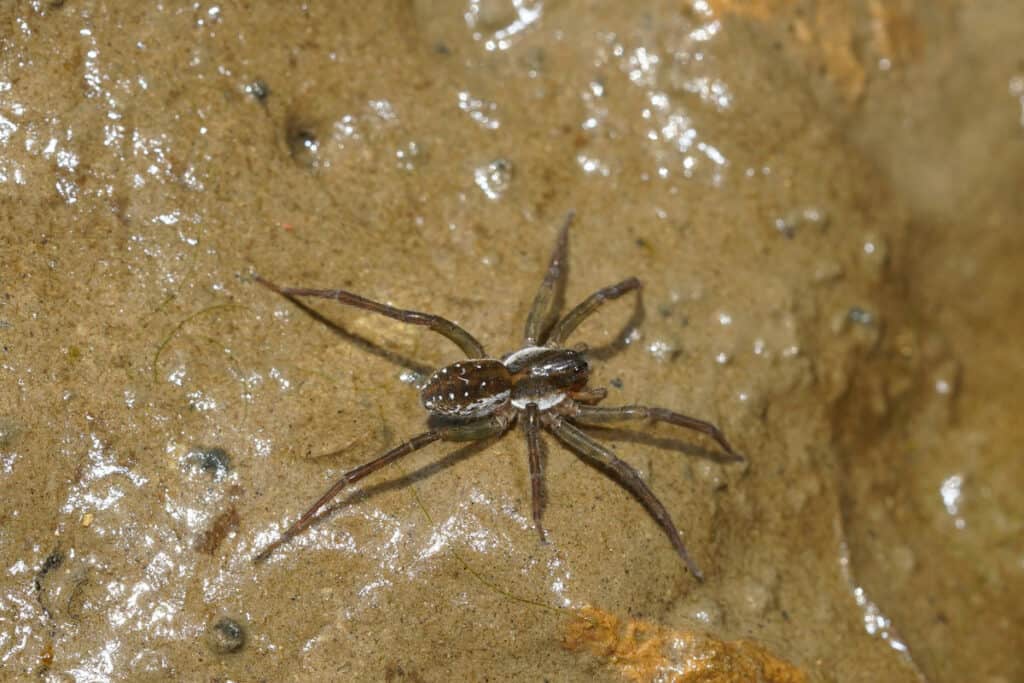
The dotted wolf spider is often mistaken for the rabid wolf spider due to their similar appearance.
©HWall/Shutterstock.com
This next entry is one of the more misleading wolf spider facts. Wolf spiders belong to the family Lycosidae, which comes from the Ancient Greek word lúkos, or wolf. Typically, scientists choose family and genera names after an animal’s distinguishing features. These features may be physical or behavioral, such as a color or shape or method of catching prey or caring for young.
Many people mistakenly think that wolf spiders get their name for their hairy appearance. In reality, wolf spiders were named by researchers due to their supposed hunting behavior. Early researchers believed that wolf spiders hunted in packs like wolves, hence their name. However, further exploration revealed this belief to be false, as wolf spiders are actually solitary animals that hunt alone.
4. Wolf Spiders Are Powerful Athletes
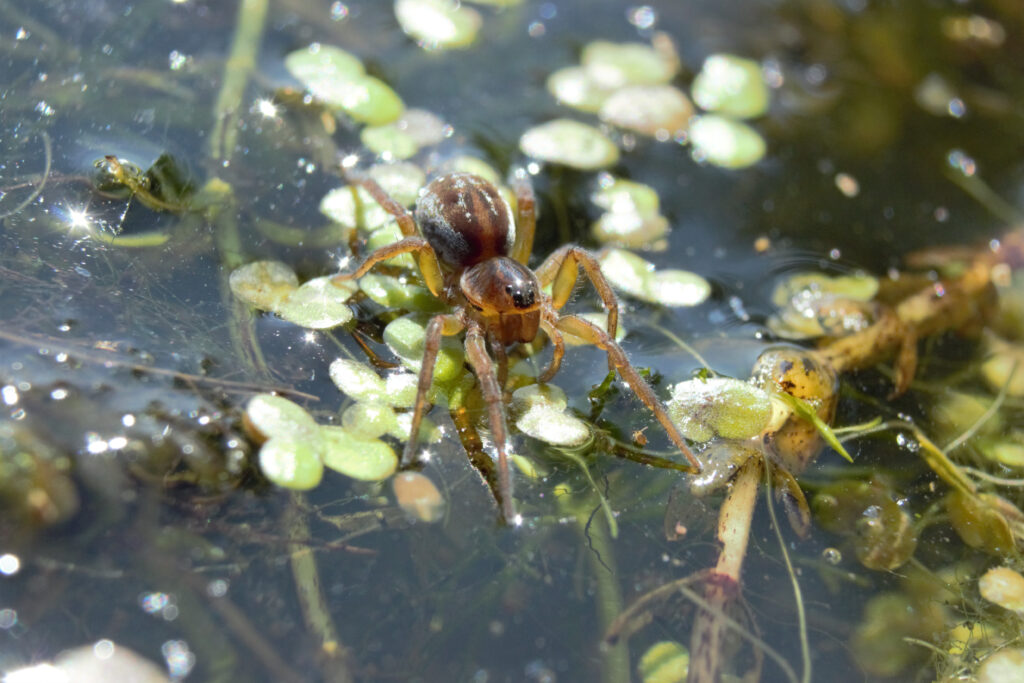
Wolf spiders are fast runners and possess strong, powerful legs.
©David James Chatterton/Shutterstock.com
As we’ve already established, wolf spiders are powerful and robust hunters that excel at chasing down their prey. Unlike many other spiders that are relatively slow and flimsy, wolf spiders possess strong, powerful legs and are quite nimble. They are fast runners, and some species can reportedly sprint up to 2 feet per second.
Moreover, wolf spiders come in a variety of sizes, ranging from a quarter of an inch to 1.25 inches long, excluding the legs. Typically, wolf spiders prey on insects such as ants, flies, grasshoppers, and crickets. However, some especially large females can take down even larger prey. These spiders will prey on small amphibians and reptiles such as frogs, lizards, and snakes.
3. People Mistakenly Believe Their Venom is Necrotic
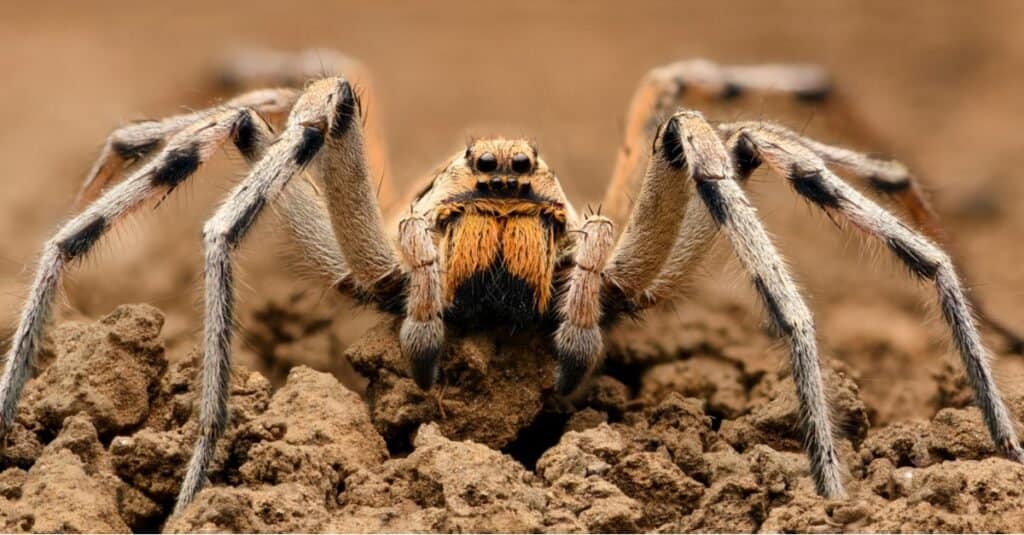
Wolf spiders aren’t deadly to humans, but they can still bite and cause uncomfortable symptoms.
©Cornel Constantin/Shutterstock.com
Spiders fill people with fear due to their appearance, hunting habits, and venomous bite. Even though spider bites are relatively rare and fatalities even rarer, fear and misinformation about spiders abound. Tall tales and rumors plague numerous spider species, particularly large spiders that catch the eye and attract attention.
For years, people circulated a rumor that claimed wolf spiders possessed necrotic venom. There are some spiders that have necrotic venom, such as spiders in the recluse family Sicariidae. If one of these spiders bites you, the bite can cause skin necrosis and other health complications. In reality, the bite of a wolf spider causes no such problems. While painful, their bite causes little more than some pain, redness, and swelling, although secondary infection with large bites is a risk.
2. Wolf Spiders Make Popular Pets
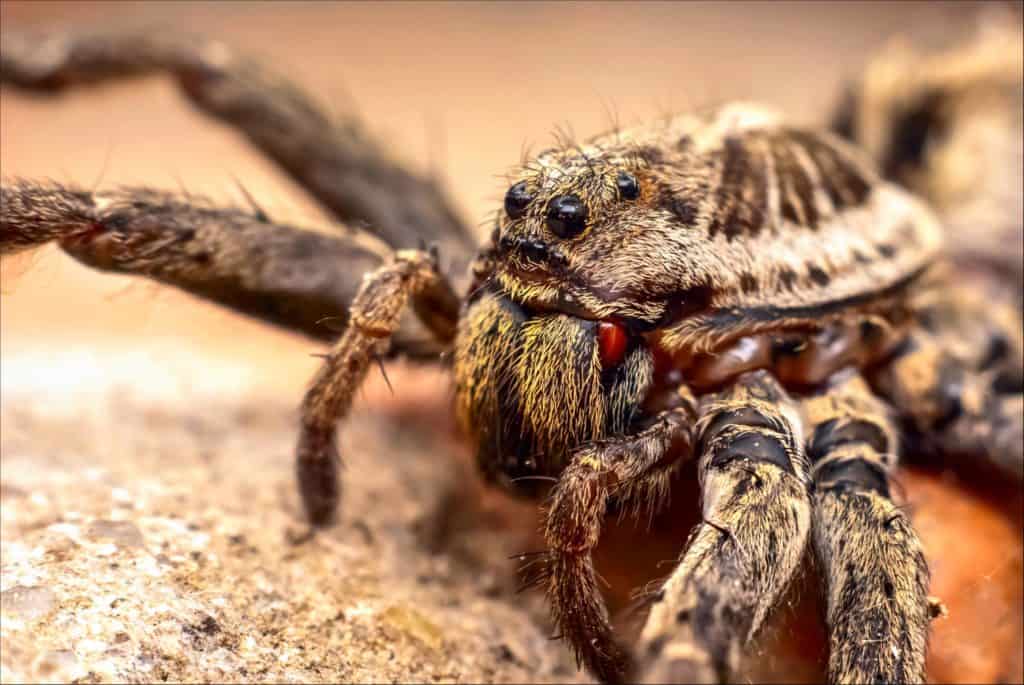
Wolf spiders make popular pets.
©viktori-art/Shutterstock.com
In the past few years, pet enthusiasts and collectors have increasingly begun keeping spiders as pets. Spiders are easy to keep and maintain and exhibit interesting behaviors that make them fascinating to watch. Wolf spiders in particular, are popular in the pet trade.
If you want to keep a wolf spider as a pet, there are a few things you should know. Wolf spiders like to live in dark places, and you’ll want to buy a terrarium that’s big enough for your spider. Fill the terrarium with plenty of rocks, plants, soil, and other structures for the spider to hide in and behind. Just remember, wolf spiders can live up to 4 years in captivity, so only invest in a wolf spider if you’re in for the long haul.
1. Wolf Spiders Serve an Important Ecological Function
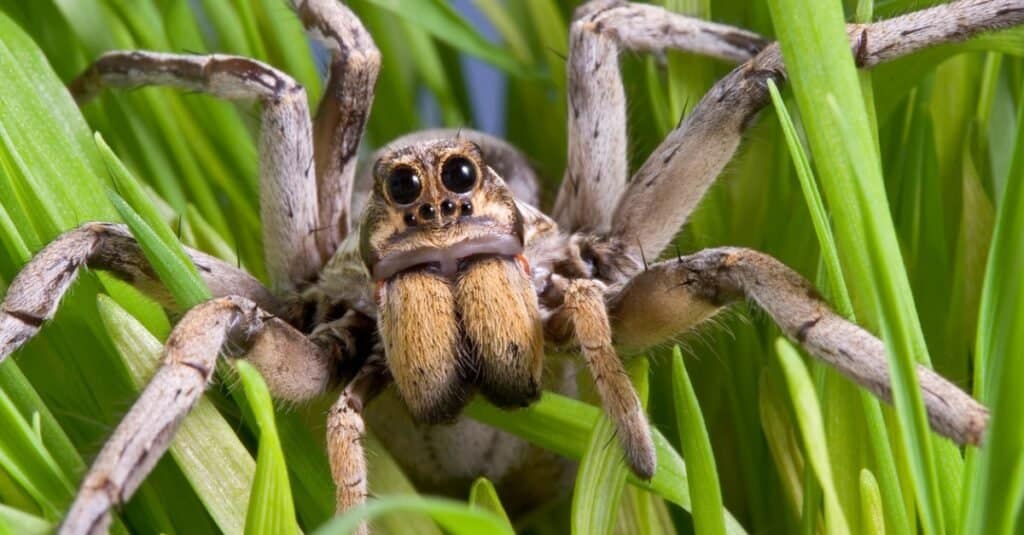
Wolf spiders prey on numerous household pests and other insects.
©iStock.com/CathyKeifer
For our final entry on our list of wolf spider facts, we thought it worthwhile to draw attention to the contributions these spiders make to the environment. Like many spiders, wolf spiders serve an important ecological function. Male wolf spiders frequently wander into homes, which means they can prey on household pests. They serve as a natural form of insect control by feeding on pests such as mosquitoes and flies. Wolf spiders also keep down insect populations in gardens and farms. For this reason, many people consider them beneficial and welcome the presence of wolf spiders on their land.
The photo featured at the top of this post is © Piboon Suwankosai/Shutterstock.com
Thank you for reading! Have some feedback for us? Contact the AZ Animals editorial team.




